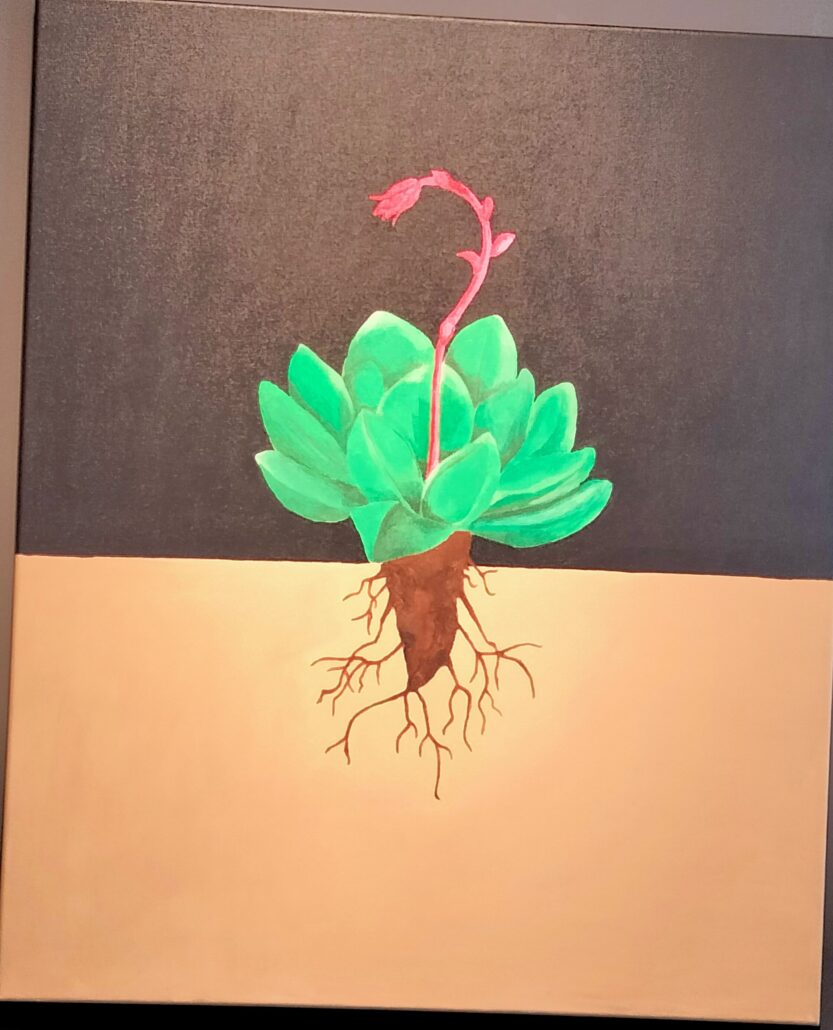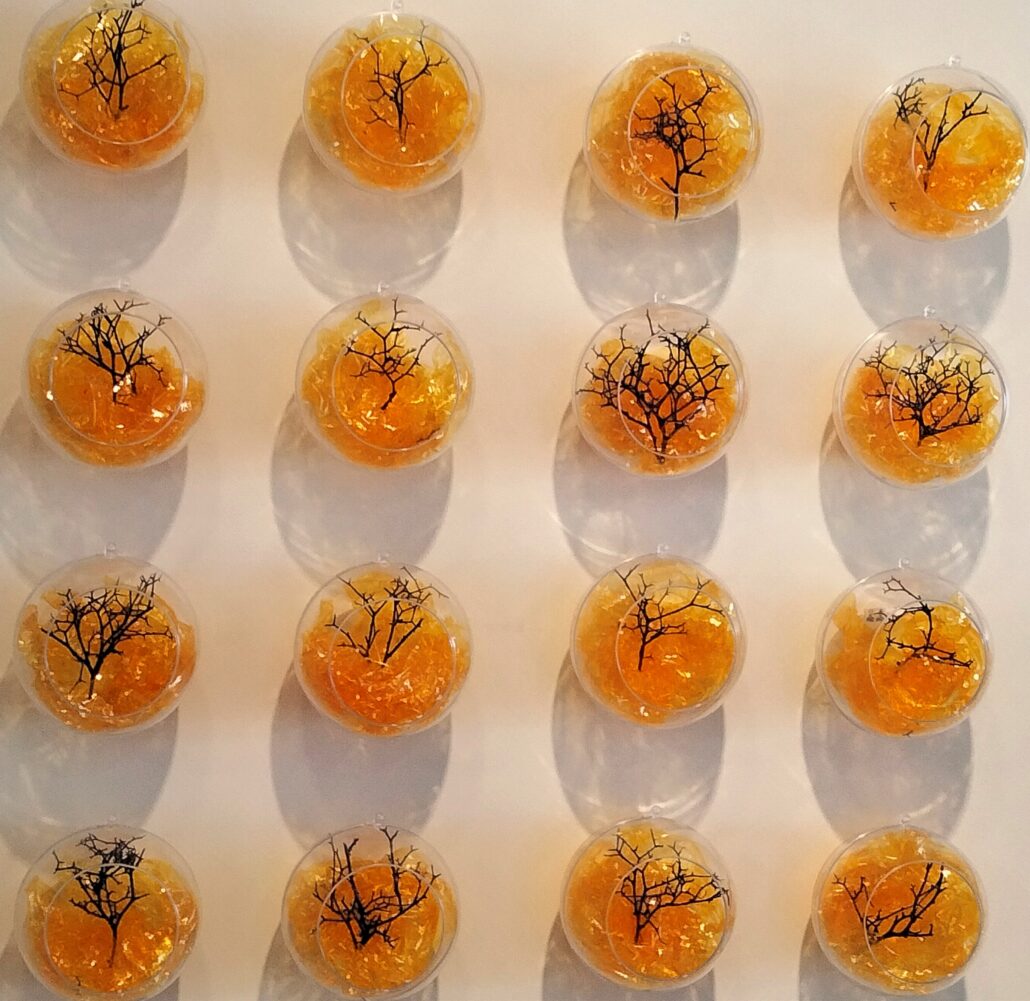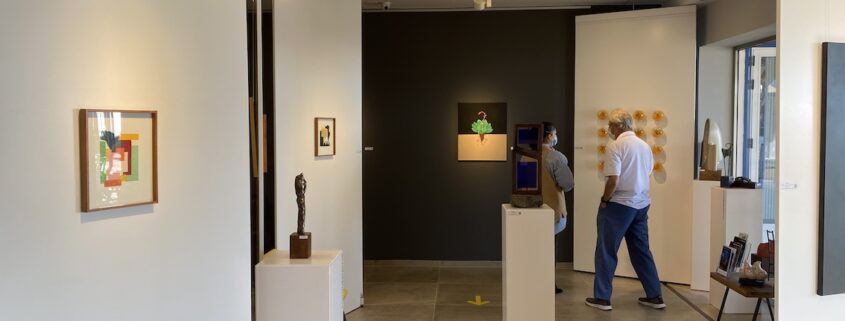IDENTITY & TRAVELLER. Gaucimara Hernandez
IDENTITY & TRAVELLER. Gaucimara Hernandez
exhibition:The Lanzarote Art Gallery 29th January to 5th March
review by Norman Warwick
Management and delivery of such ´live´ events as visual arts exhibitions is difficult at the moment with the covid restrictions at level four and footfall must have suffered even at this luxurious and elegant gallery. Because of our current level of covid restrictions here on Lanzarote the owner of one of our top arts venues has decided the gallery´s current exhibition may be the last one until restrictions are reduced or lifted altogether,
´During alert 4 the gallery hours will be from Monday to Friday 10:00 to 14:00 hours,` Eduardo told Lanzarote Information, ´and Saturdays from 11 to 14: hours.´
Eduardo admitted that ´these are quite drastically reduced customer-based working hours for The Lanzarote Art Gallery.´
However this major selection of works will run, with all safety measures observed, for six weeks from 29th January throughout these hours.

´So, this still presents us with a great opportunity to convey our message as a Gallery,´ Eduardo said, ´and show some of the most promising artists in our environment. The Lanzarote Art Gallery is an art room known for showing established and emerging talent to encourage customer-investment in the creators who are shaping our way of consuming design and art. We invite visitors to The Lanzarote Art Gallery to contemplate their surroundings from a new perspective, and to feel the power of art as it leads them to enjoy and understand the everyday and the small in a simple way, on a journey through beauty.´
Identity & Traveller, as an exhibition, certainly addresses ´the everyday and the small in a simple way´ as it seeks to examine the island as it would have been seen by its earliest tourists.
The collection cleverly contextualises personal identity in relation to not only those first tourists (travellers) but their responses to the trip they made to get here, and their first sight and feel of the landscape and subsequently their experience as travellers in Lanzarote.
And these retrospectives are all created by a young woman native to the island that in the first two decades of the 21st century was, and will be again after covid, a much-loved destination for visitors from all around the world.
Throughout the nineteenth century many women visited the Canary archipelago, some of them of relevant importance to it, such as Elizabeth Murray, Anne Duncan, Isabelle Burton, Marianne North, Anne Brassey, Frances Latimer and Mary Henrietta Kingsley, among others.
It was Olivia Stone, though, who dared to visit the entire archipelago with the firm purpose of concluding her extensive and important work where she reflected all her explorer experience on the various routes of Lanzarote and other islands through her written work, Tenerife And Its Six Satellites. History now recalls Olivia as the first tourist guide of the Canary Islands and her faithful reflection of the islands in the late eighteenth and early nineteenth centuries have been well documented.
Olivia Stone and her husband visited the Canary Islands between September 1883 and February 1884. Olivia lived in a Victorian time, in which some women, very incipiently but totally pioneering, began to travel or join the adventure and discovery trips that, until that time, had been exclusively male heritage.
She carefully noted all the details of an expedition in which they quantified and recorded everything that could be measured. Subsequently, with a dynamic and very personal drafting, he turned all his annotations into a kind of travel guide for his compatriots, which, translated into Spanish, was made available to Lanzarote in 1995, more than a century after its publication under the name of Tenerife And Its Six Satellites.
Thanks to it, indigenous islanders can go back to the past of their territory and discover, with the perspective of time and through the eyes of a foreigner, what they were like and how they looked. Because, in addition to describing the landscape and the country, Stone pointed out the socio-system of the island including aspects of social, political, economic, fiscal systems and even the conservation of Aboriginal heritage, to which these ´travellers´ showed great respect and recognition. Even today, their accurate analyses and prophesies predict developments on Lanzarote and some of their proposals prove useful even today.
Unfortunately, it seems that all copies of the edition published by the Cabildo Insular de Gran Canaria in 1995 have been exhausted. However, it is hoped that at some point it can be re-edited and made available to many more people, because it is a book that, with photographs set in the context of an informative text, would be greeted with great public enthusiasm.
This Identity And Traveller art-collection by Guacimara Hernandez will surely increase the appetite for such a re-publication. She has captured the difficulty of traveling as a woman in the eighteenth century. The audacity in venturing out on trips reserved exclusively for men meant that any woman willing to get out of her routine and daily work would take a back seat, enduring a remarkable invisibility. Her mission was to be a woman who cares for the home, a family woman, a wife, a mother … submissive to the doctrines of the Victorian era. Thus, as part of the exhibition, allusion is made to the loneliness of women at the time of discovering and exploring for themselves the place, or non-place, they visit.
´Travel itself,´ says Guacimara, ´became a liberating state, beyond and outside the focus of the standards and doctrine of stereotypical society, and these women must have found comfort in the distraction.´
The artist captures the sense of wonder these early female ´explorers´ must have felt in a collection of extraordinary diversity of framed paintings, free standing models and intricate art installations.

She captures the ever-present blueness of the island created by sky and sea and she captures the relationship between the landscape and agricultural development, with one extraordinary painting showing fruit and vegetable bursting, somehow, through the rock and lava surface that seems so impenetrable for man to work on, into full and glorious flower.

It is almost impossible to look at another piece, shown here, apparently of vegetation growing on or out of rock, and protected by what seems to be a bubble, but may be just an artistic mechanism to hold art work in place, without thinking of covid and protective bubbles. Nevertheless, Guacimara told me she wasn´t thinking any of that as she put the piece together.
The fact that all faces shown in her paintings exhibited here are left featureless, and therefore expressionless, seemed to me another comment on covid and face-masking but the artist assured me that was part of my viewing experience rather than her artistic intent. The faces are deliberately left blank as a comment on female social-anonymity at the time and as a kind of equalisation between humankind and nature.

There is also an intriguing collection of small works laid out in a horizontal line that end with the word Amen. It is obviously a reflection on prayer but rewards our own considerations as viewers, too.
We followed walkway guidelines on the floor as we ´travelled´ around the exhibition and maintained a social distance that today might have been a comment on the division between male and female roles in those times of early explorers. As always The Lanzarote Art Gallery had introduced us to an artist whose work we will now follow, along with that of Masqali, who we reviewed on these pages previously. The exhibition makes excellent use of the light and space of the Gallery, which stands at Avda Canary Islands 12 Local 18- 19 C.C Las Maretas 35508 Costa Teguise-
For further information on Identity & Travellers check out
Exposiciones, Arte y Artistas en Lanzarote Art Gallery
The Lanzarote Art Gallery stands in an area surrounded by restaurants and bars and pavement cafes where, whilst many are closed in this covid-caused depression, those that remain open continue to offer warmth and courtesy and good fare. As we returned to the car park we stopped at a little pavement-café for a coffee and a slice of Spanish Omelette.
For the past five years I have held at number one in my all-time top ten Spanish Omelettes, the one served in San Miguel at Teguise, but this one has now joined that at the top of the charts. The four euros we paid won´t, sadly, change the lives of the family struggling to keep their premises open, but that Spanish Omelette could sure change my life.
We later explored the spooky, spine-tingling coastal cliffs of Mala en route to Arietta, where we had a wander round the town and its beautiful, rugged beach before driving up and around Mirador Del Rio. As we drove, very slowly, we looked down on the island of La Graciosa, slumbering gently hundreds of feet below in a slowly lapping sea, reminding us that her beauty really does earn her a place as one of the eight Canary Islands.
As we then climbed up the tunnelled twists and turns out of Haria the mountainsides and the valley of a thousand palms were a carpet of purple, yellow and white wildflowers embedded in mountains of rock. Somehow as we climbed (in the car) to seemingly unscaleable heights we were left discussing Guacimara´s work and how her collection and this view seemed to be working together to help us understand something of how those early explorers, celebrated in Identity And Traveller, must have felt. We held our breath at the beauty of the island and wondered how any artist could have painted such colours over such a blank canvas of dry land, desert, drought, rock and lava with such an abstract, colourful masterpiece.
Guacimara´s work will be shown at the Lanzarote Art Gallery until 5th March and no day could be more rewarding than a walk around a collection of great work in a first class gallery before following the sidetracks & detours through an area of Lanzarote at its most beautiful at this time of year. Then when you arrive back at home you can learn more about Guacimara at www.paseartelanzarote.com
Happy Trails.




Leave a Reply
Want to join the discussion?Feel free to contribute!